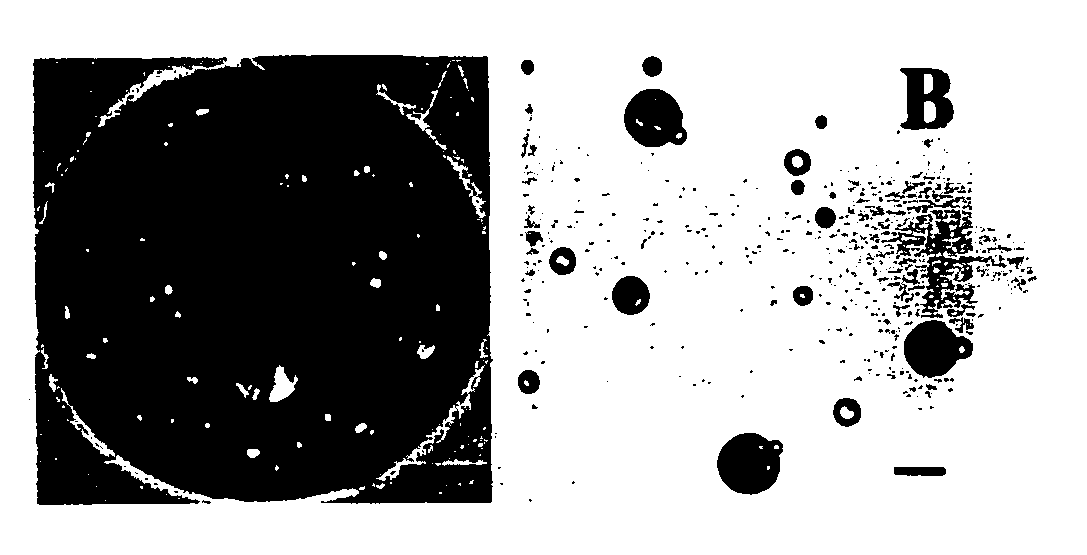Compositions and methods for biodegradable microspheres as carriers of bioactive substances
a bioactive substance and microsphere technology, applied in the field of microencapsulation, can solve the problems of preserving the biological activity of the microencapsulated polypeptide, reducing the efficiency of microencapsulation drug delivery, and easy denature of the protein, and achieve the effect of cost-effective and scalabl
- Summary
- Abstract
- Description
- Claims
- Application Information
AI Technical Summary
Benefits of technology
Problems solved by technology
Method used
Image
Examples
Embodiment Construction
[0023]While the making and using of the various embodiments of the present invention are discussed in detail below, it should be appreciated that the present invention provides many applicable inventive concepts which can be embodied in a wide variety of specific contexts. The specific embodiments described herein are merely illustrative of specific ways to make and use the invention and do not delimit the scope of the invention nor the scope of the claims appended hereto.
[0024]A bioactive substance, as defined herein, is an agent, or its pharmaceutically acceptable salt, which possesses therapeutic, prophylactic or diagnostic properties in vivo or which influences the biological structure, function, or activity of a cell or tissue of a living organism. Examples of suitable therapeutic and / or prophylactic biologically active agents include, for instance, proteins such as immunoglobulin-like proteins, antibodies, cytokines (e.g., lymphokines, monokines, chemokines), interleukins, int...
PUM
| Property | Measurement | Unit |
|---|---|---|
| Percent by mass | aaaaa | aaaaa |
| Weight | aaaaa | aaaaa |
| Basicity | aaaaa | aaaaa |
Abstract
Description
Claims
Application Information
 Login to View More
Login to View More - R&D
- Intellectual Property
- Life Sciences
- Materials
- Tech Scout
- Unparalleled Data Quality
- Higher Quality Content
- 60% Fewer Hallucinations
Browse by: Latest US Patents, China's latest patents, Technical Efficacy Thesaurus, Application Domain, Technology Topic, Popular Technical Reports.
© 2025 PatSnap. All rights reserved.Legal|Privacy policy|Modern Slavery Act Transparency Statement|Sitemap|About US| Contact US: help@patsnap.com



